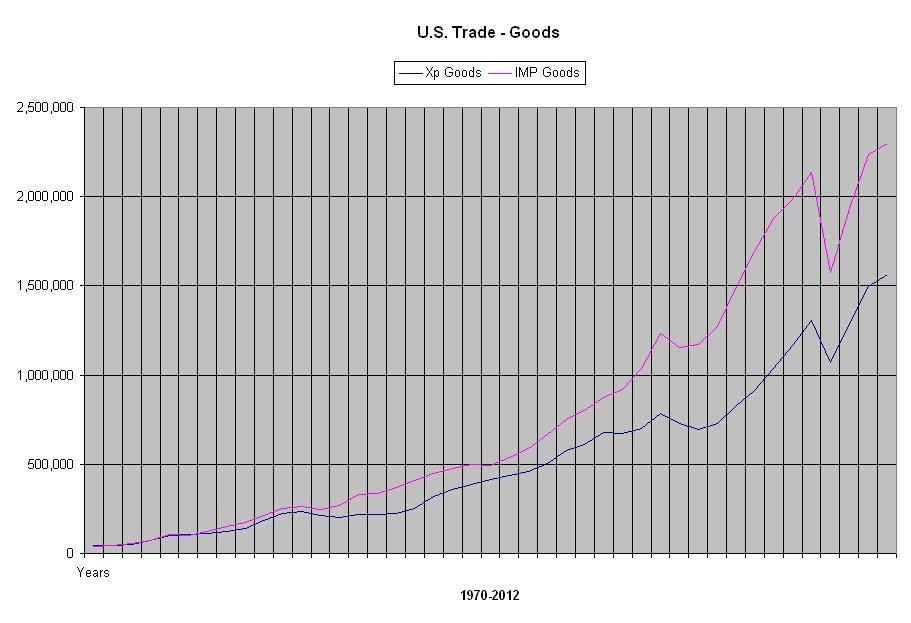The trade deficit is a direct consequence of the fact that more workers in other nations are employed producing goods and services for the United States than the other way around. So far, this wealth hemorrhage has been confined to the middle class, compelled to choose between unemployment and underemployment. But that is economically, politically and socially unsustainable; the massive, ongoing loss of well-paying middle class jobs that began in the 1970s has resulted in a dismal labor participation rate, 63.3% in April 2013. Worse, more than 50% of the jobs created in the same month were in low-paying industries such as retail trade (29,000) and leisure and hospitality (38,000). The writing is on the wall: in 2012, 284,000 college graduates had jobs that paid minimum wage, a 70% increase over the previous decade (Wall Street Journal, March 30, 2013). Presumably, those without college degrees were pushed deeper into the abyss of unemployment, underemployment and despair. No wonder the drug trade has so many eager participants. Furthermore, lower wages mean lower tax revenue and fewer dollars to offset China’s growing defense expenditures as a percent of its economy.
